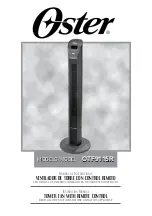
5
3. Check that the rotor can run free-
ly. This is done by opening the
inspection hatch and turning the
rotor by hand. See fig. 17. If there
are no abnormal noises, close the
inspection hatch again, and test
the fan. Follow the procedure
described in section “4.5 Start-
up procedure”.
5.6 Shaft seal
The fans are mounted with a shaft
seal between shaft and fan housing.
There are two main types of seals:
split seal and double lip seal. In the
following only the double lip seal is
described. The seal is made up of
several components. See fig. 18 and
19. The individual components are
sealed by means of seals. Between
shaft and fan housing sealing is per-
formed using a double lip seal and
an oil thrower. The seal is clamped
between the abutting surface of the
motor shaft and the impeller.
Dismounting
The impeller (pos. 7) is detached as
described under “5.2 Dismounting
of impeller from the inlet side” or
“5.4 Dismounting of motor with im-
peller from the motor side”. Pull the
oil thrower (pos. 6) and the seals
(pos. 13) off the shaft (pos. 1). See fig.
18. Loosen the four tailstock screws
(pos. 9) in the gland seal (pos. 2), and
pull the gland seal (pos. 2) off the
shaft (pos. 1). The gland seal (pos. 12)
can now be retracted from the seal
cover (pos. 4).
Mounting
All seals must be replaced upon
mounting. See fig. 18 and 19. Lubri-
cate the gland seal (pos. 2) on the in-
side with a thin oil and push it over
the shaft (pos. 1). Fill up two-thirds
of the cavity in the gland seal (pos.
12) with SKF LGEP 2 or similar
grease. Press the double lip seal (pos.
12) into the sealing cover (pos. 4).
Note
1. The gland seal (pos. 12) must
point in the right direction.
2. If the sealing cover (pos. 4) was
dismounted, the gland seal (pos.
12) must be centred around the
shaft (pos. 1).
Press the oil thrower (pos. 6) and
seals (pos. 13) over the shaft (pos. 1),
and mount the impeller and fasten it
by means of the washers (pos. 14)
and the screw (pos. 8). Tighten the
tailstock screws (pos. 9) on the gland
seal (pos. 2). Finish assembling the
fan inlet, or mount the motor with
impeller as described under “5.3
Mounting of impeller from the inlet
side” and “5.5 Mounting of motor
with impeller from motor side” re-
spectively.
6. Sound
The sound generated by the fans de-
pends on installation and operating
conditions, and general data on
sound generation is therefore una-
vailable.
Refer to the AirBox calculation pro-
gram for specific emissions and to
the product catalogue for more gen-
eral data.
7. Inspection and test
It is recommended to test and in-
spect the CAL fans at regular inter-
vals with regard to operability and
operating conditions.
Extent of inspection
• Measure power consumption
• Check torques for fixing bolts
and correct if necessary
• Cleaning
- inside with pressure air
- outside with water
• Visual inspection of impeller,
fan casing, and electric
connection
Enter all values and observations in
a log.
8. Safety
The CAL centrifugal fans must be in-
stalled according to Novenco Build-
ing & Industry A/S’, the current and
the local safety regulations. At a
minimum these include EN 13850.
It is recommended to review and re-
vise safety procedures regularly.
Safety check
• Test if safety procedures and the
installation work correctly.
• Check if safety regulations have
been changed and if the
installation needs revising.
• Consider taking additional
measures to improve the safety
of the installation. For example,
by mounting wire guards on
inlet and outlet.
9. Spare parts
Contact Novenco Building & Indus-
try A/S for information about and
ordering of spare parts.
Fig. 16
Fig. 17
Fig. 18
Fig. 19
1
2
9
3
12
4
6
14
7
1
2
3
4
5
6
7
8
9
11
12
13
14
10
Содержание NOVENCO CAL Series
Страница 1: ...CAL INSTALLATION AND MAINTENANCE 919043 0 English CAL...
Страница 8: ...WWW NOVENCO BUILDING COM CAL...


























